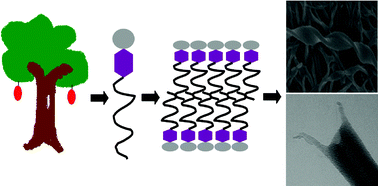Design and development of different forms of soft matter from renewable (biomass) feedstocks is gaining attention in current research. This highlight summarizes our continuing efforts towards the effective utilization of renewable resources for new chemicals, fuels and soft materials, and selected successful stories in that direction. Cashew nut shell liquid, an industrial by-product, was used as a raw material to synthesize aryl glycolipids which upon self-assembly generated an array of soft materials such as lipid nanotubes, twisted/helical nanofibers, low-molecular-weight hydro/organogels and liquid crystals. These soft architectures were fully characterized by using different techniques. In another example, amygdalin, a by-product of the apricot industry, was used to develop novel amphiphiles, which showed unprecedented gelation properties in a wide range of solvents. To take these soft nanomaterials to a second level, we successfully demonstrated the utility of these hydrogels as drug delivery vehicles. Intriguingly, enzyme catalysis was used as a tool to make and break the hydrogels, which apparently triggered controlled drug delivery. We believe these results and this highlight will motivate us and others in the field of biobased materials research, green chemistry and soft material development through self-assembly processes, to design and develop new functional materials from plant/crop-based renewable resources, otherwise underutilized.


 Please wait while we load your content...
Please wait while we load your content...